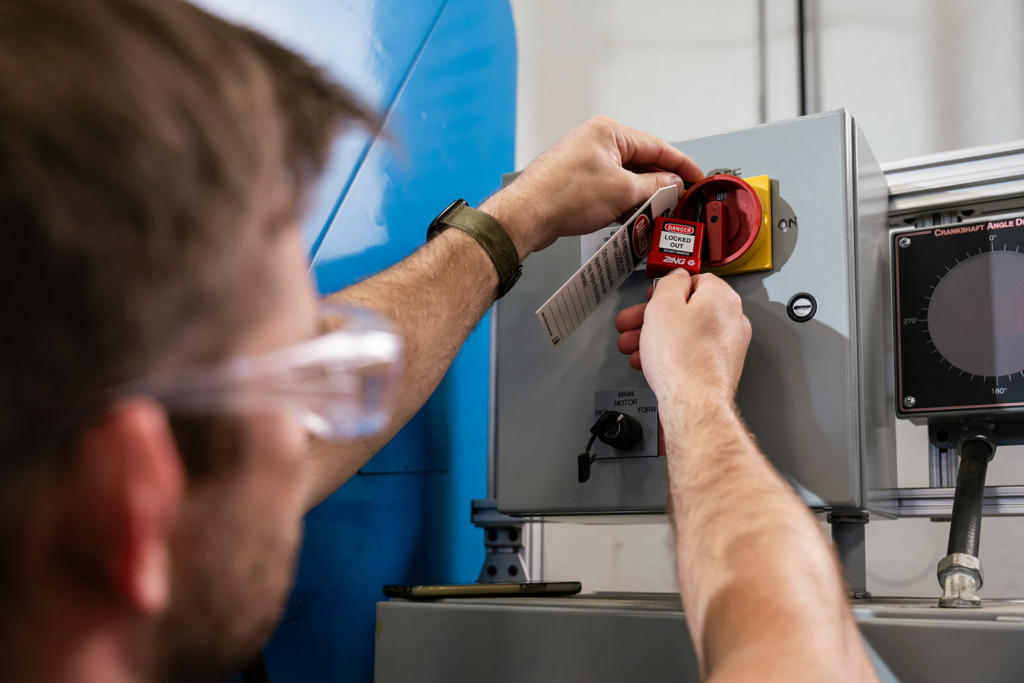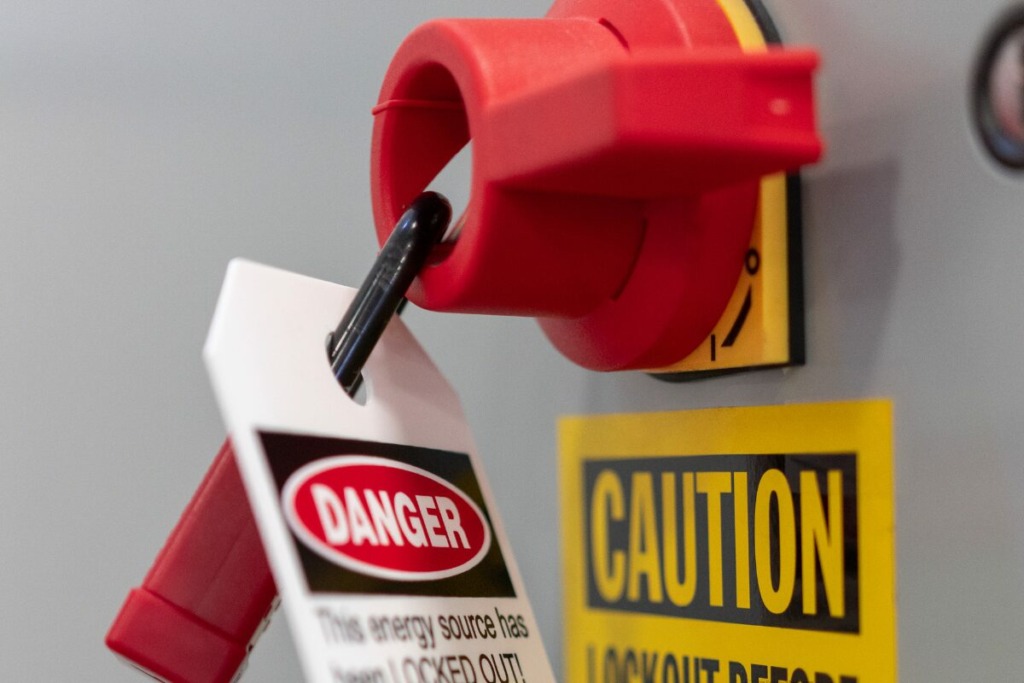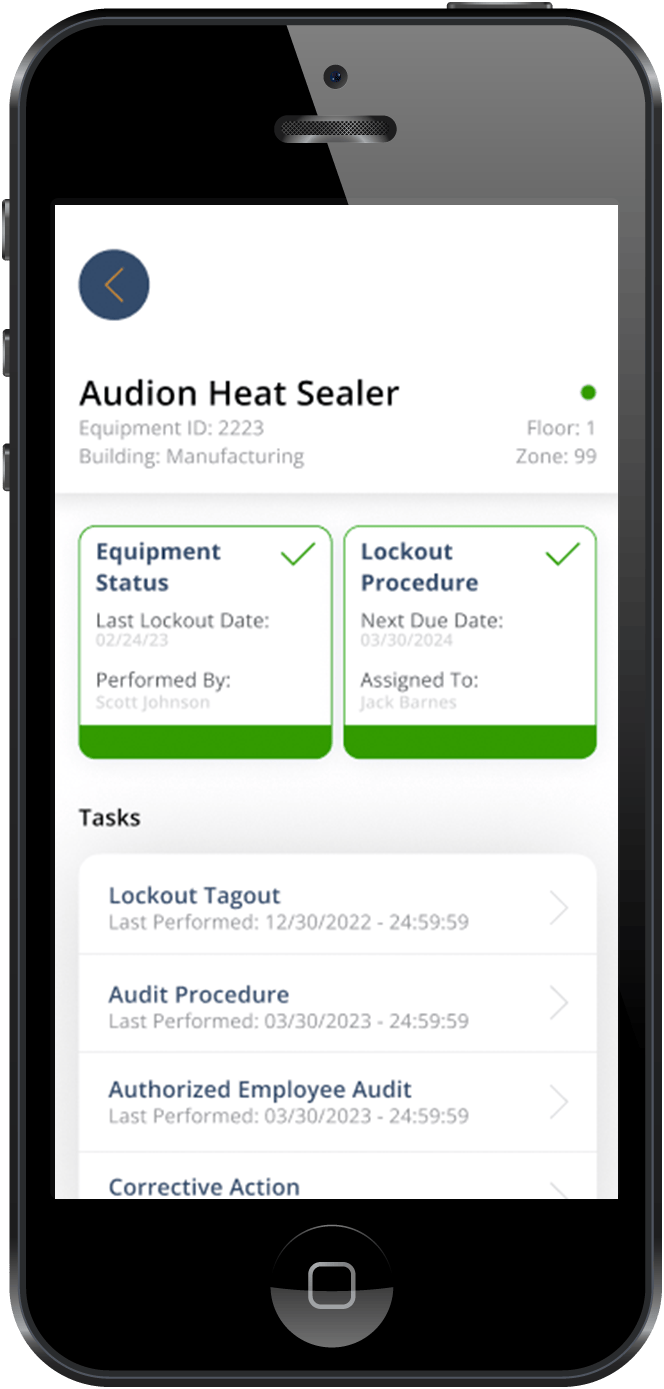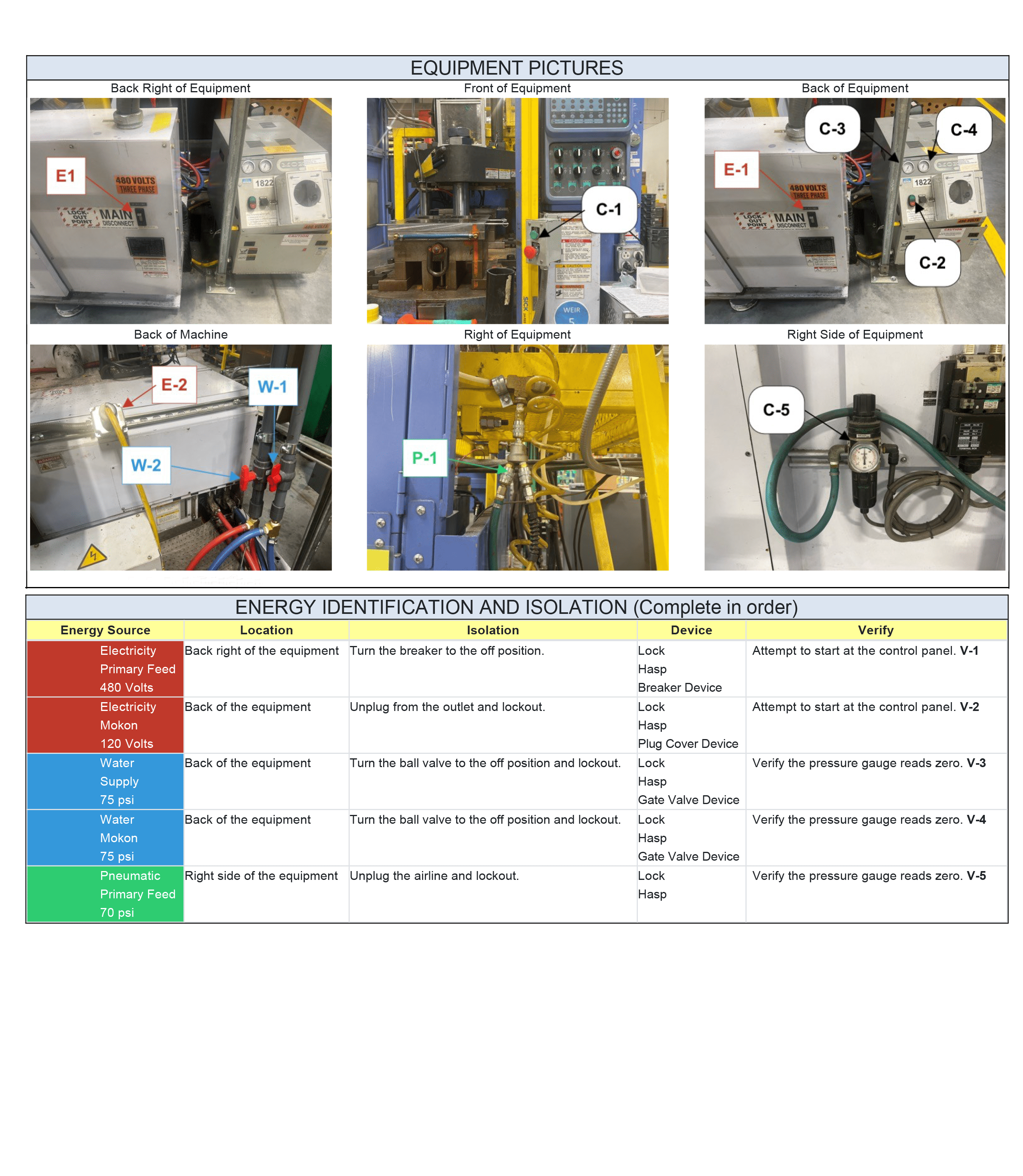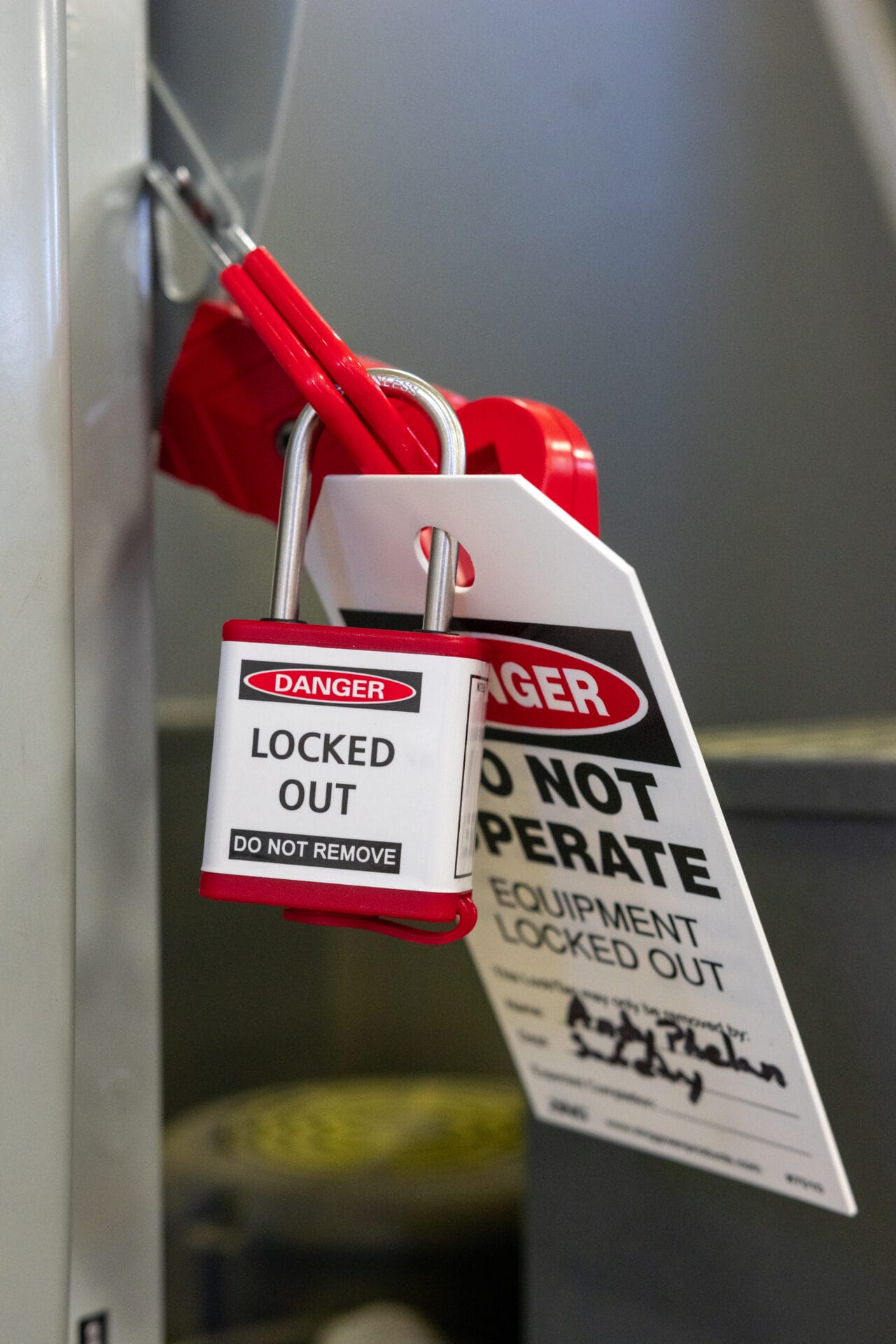Not sure whether to use machine-specific or process LOTO? This guide compares both & helps you choose the best fit for your facility.
When it comes to Lockout Tagout (LOTO), not all procedures are created equal. One of the most common questions safety professionals face is: “Should we be using machine-specific LOTO or process-based LOTO?”
Understanding the difference between these two approaches and knowing which one is right for your facility can be the difference between OSHA compliance and costly violations, or worse, a serious incident.
In this article, we’ll break down the key differences between process LOTO vs machine-specific LOTO, the pros and cons of each, and help you determine the best fit for your safety program.
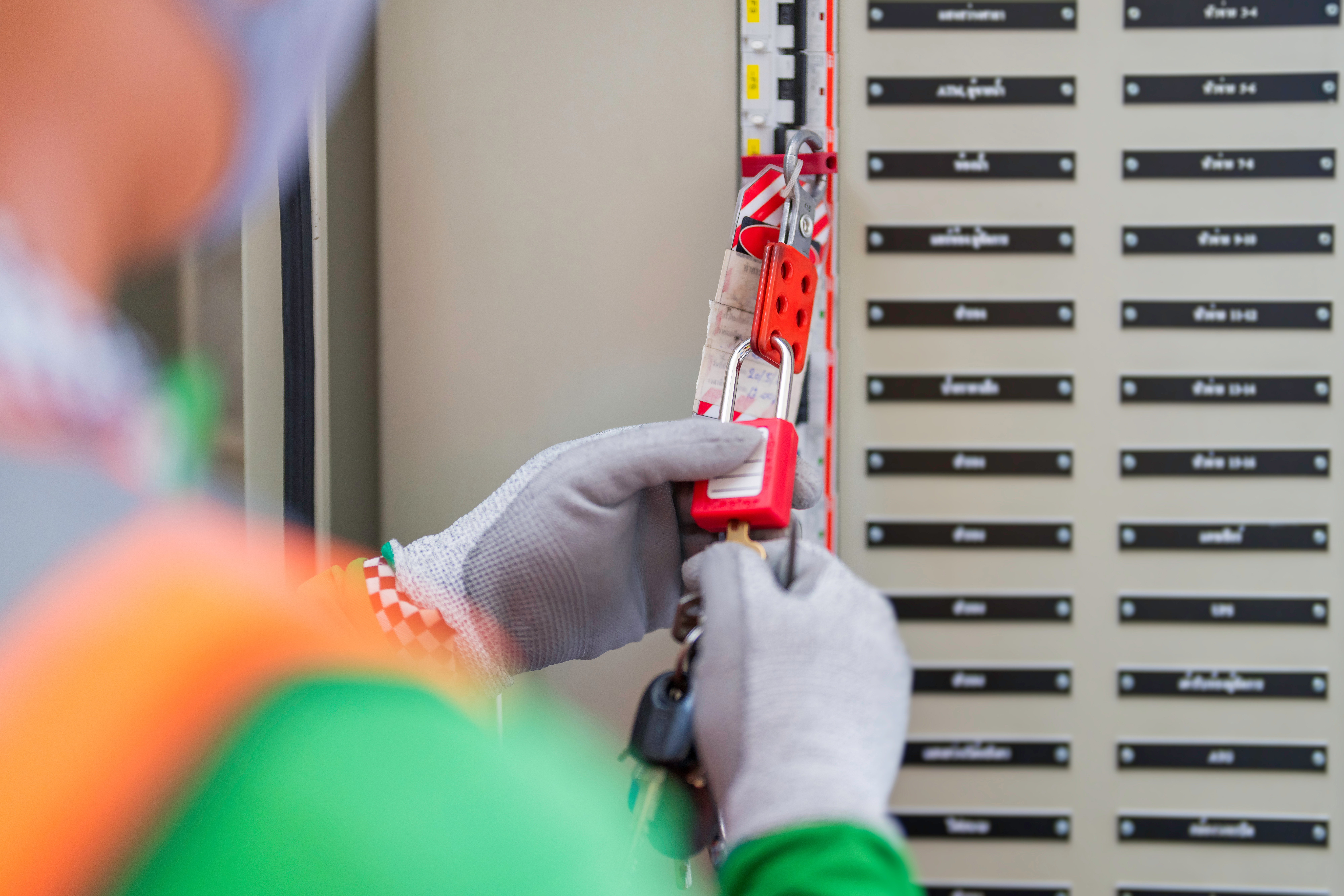
What Is Machine-Specific LOTO?
Machine-specific LOTO involves creating detailed lockout procedures for each individual piece of equipment. These procedures identify:
- All energy sources (electrical, pneumatic, hydraulic, etc.)
- The exact shutdown steps
- Isolation points
- Required locks and tags
- Verification instructions
Each machine has its own documented LOTO procedure, often stored on-site near the equipment or accessed digitally through software like Smart Safety Pro.
| Feature | Machine-Specific LOTO | Process LOTO |
|---|---|---|
| Scope | Individual Machines | Entire systems or production lines |
| Complexity | Low to medium | High |
| Best For | Discrete equipment, shops, manufacturing lines | Refineries, power plants, chemical processing |
| Procedure Ownership | Maintained per asset | Maintained per process |
| Digital Management | Easily automated | Often requires custom workflows |
Pros and Cons of Each Approach
Machine-Specific LOTO
Pros:
- Easier to implement and standardize
- Ideal for most industrial environments
- Faster employee training
- Simplifies compliance documentation
- Works well with digital LOTO systems like Smart Safety Pro
Cons:
- Not ideal for interconnected or continuous-flow systems
- Requires maintaining many individual procedures
Process LOTO
Pros:
- Designed for complex or continuous operations
- Reduces downtime in process-driven environments
Cons:
- More difficult to train and audit
- Requires high coordination and specialized knowledge
- Not supported by many off-the-shelf LOTO software systems
Which One Do You Really Need?
In most environments, machine-specific LOTO is the practical choice. It’s simpler, easier to train on, and better suited to modern manufacturing, warehousing, and industrial equipment layouts. If your team services pumps, mixers, conveyors, or CNC machines, machine-specific procedures are your best bet.
However, if your operation involves:
- Interconnected systems
- Large-scale chemical or thermal processes
- Multi-site energy isolation
Then process LOTO may be necessary, but expect to layer it with machine-specific procedures for individual assets. There is no “one size fits all approach” so you will need to look at your specific circumstances before deciding what would be best.
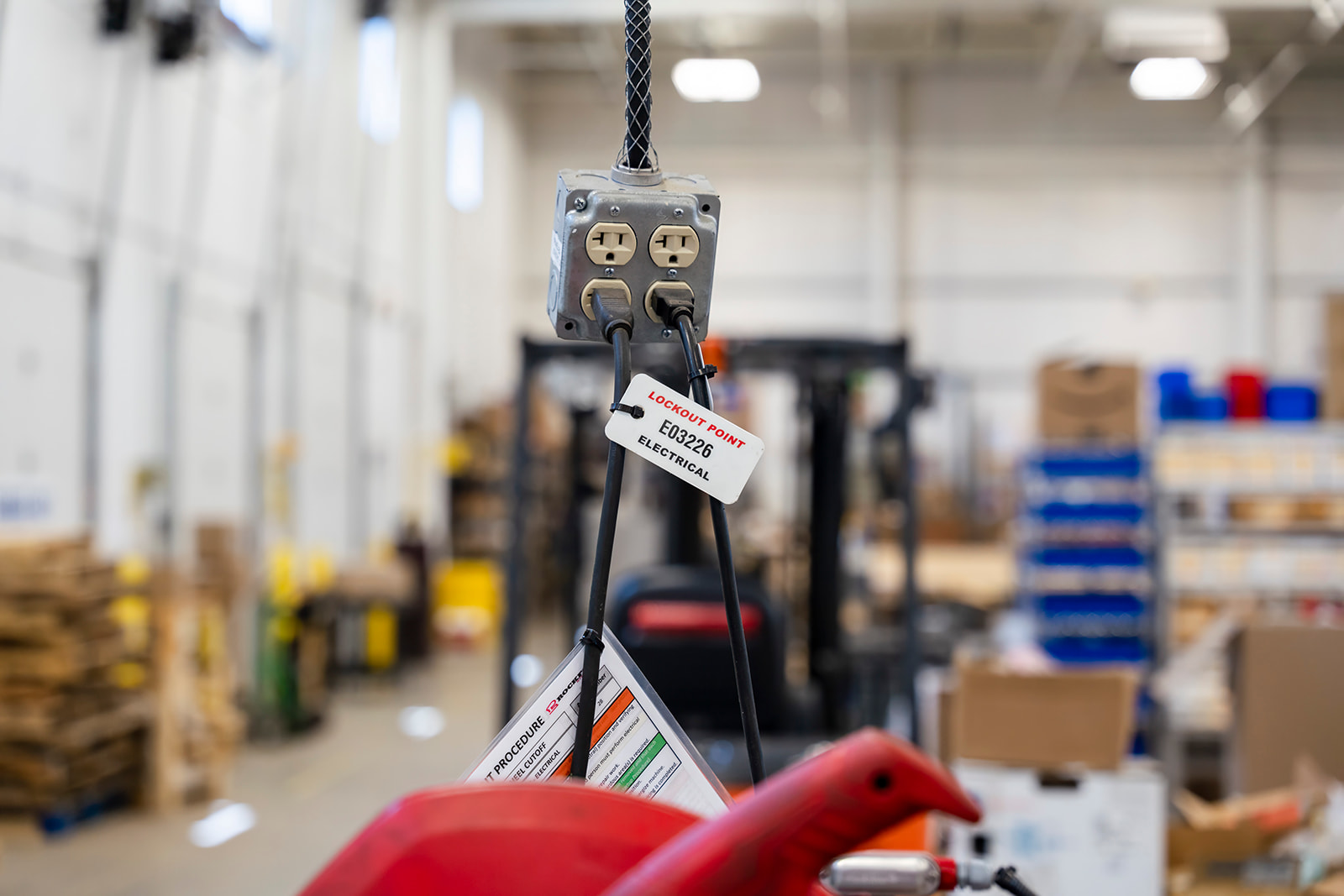
Why Smart Safety Pro Focuses on Machine-Specific LOTO
At Smart Safety Pro, we designed our LOTO software to excel at machine-specific lockout management. Why? Because that’s where most companies struggle—and where digitization makes the biggest impact.
With Smart Safety Pro, you can:
- Create and update machine-specific procedures in minutes
- Use QR codes to pull up procedures directly at the machine
- Track employee lockout activity and compliance
- Get audit-ready documentation instantly
Process LOTO may require custom engineering-level solutions, high-risk environments like chemical or refinery operations. For instance, OSHA’s case study of a sour‑water pipeline lockout incident in a chemical plant highlights the complexity of managing multiple isolation points across miles of piping, but machine-specific LOTO is something you can master today.
Final Thoughts
When comparing process lockout tagout vs machine-specific, it’s not about which is better, but which is right for your operation. Most facilities benefit from machine-specific lockout tagout because it offers:
- Greater control
- Better compliance
- Faster implementation
If you’re ready to upgrade your LOTO program and leave paperwork behind, Smart Safety Pro is here to help you lock it down, safely and efficiently.
For more information on lockout tagout procedures, check out some of our other articles:


